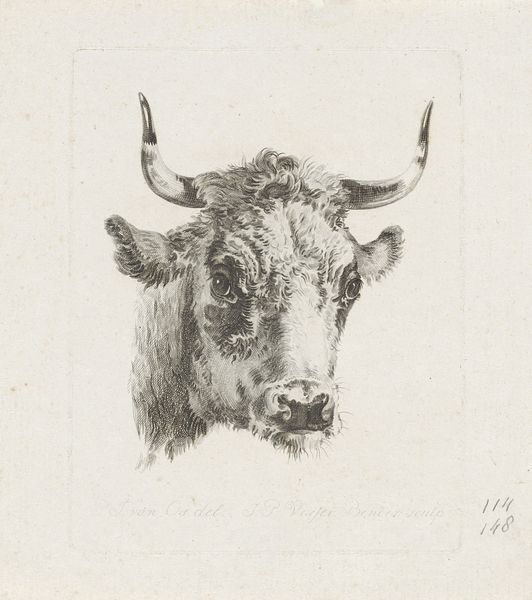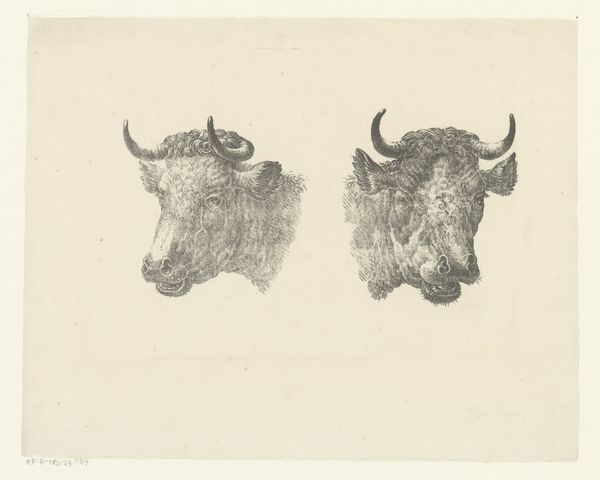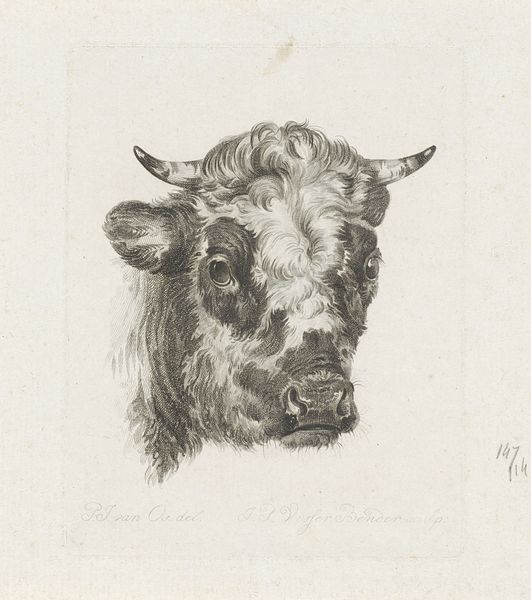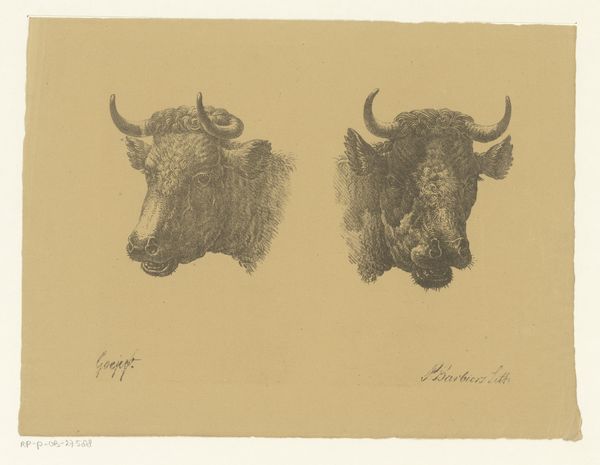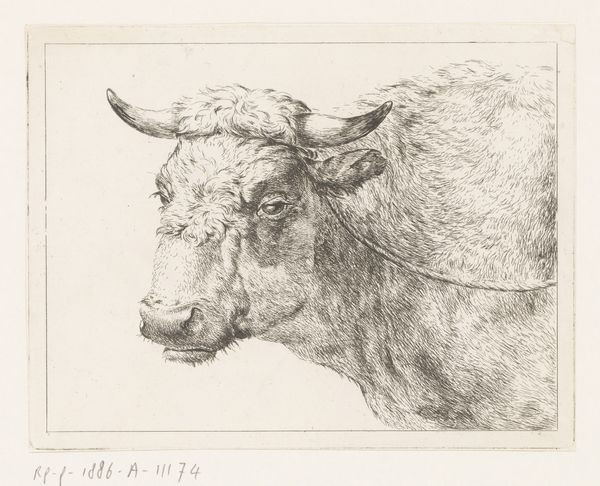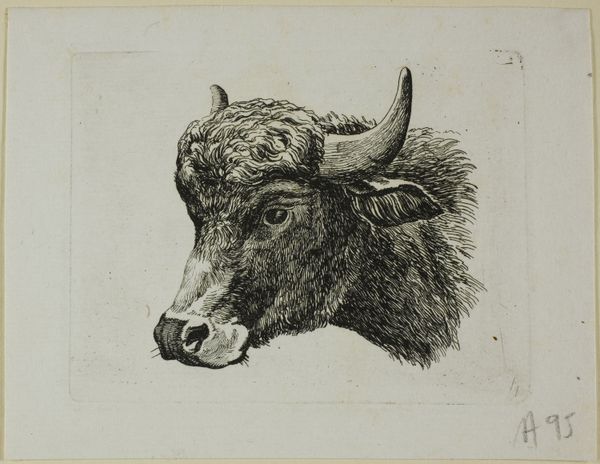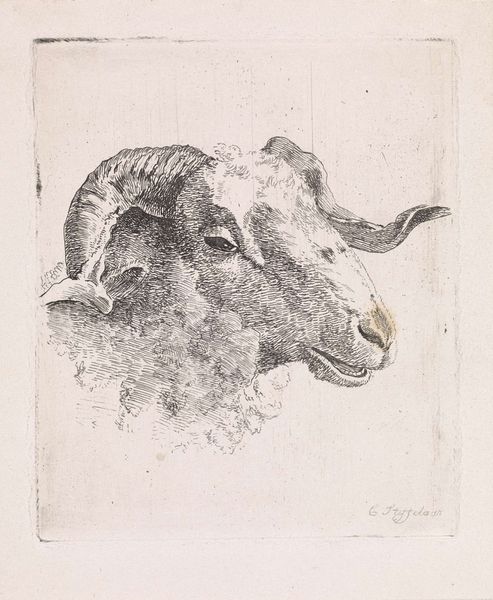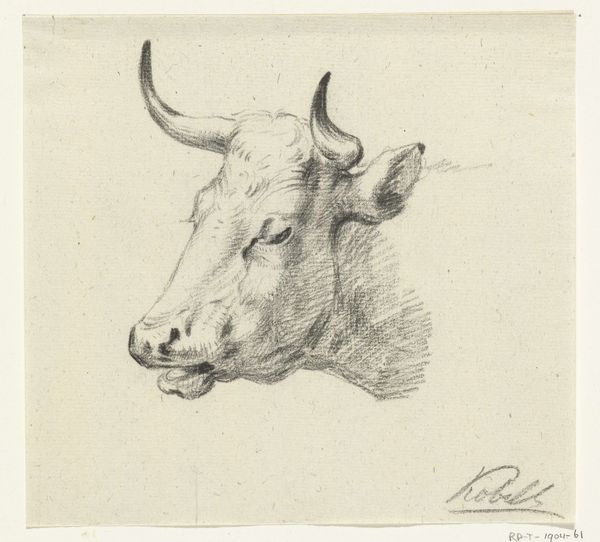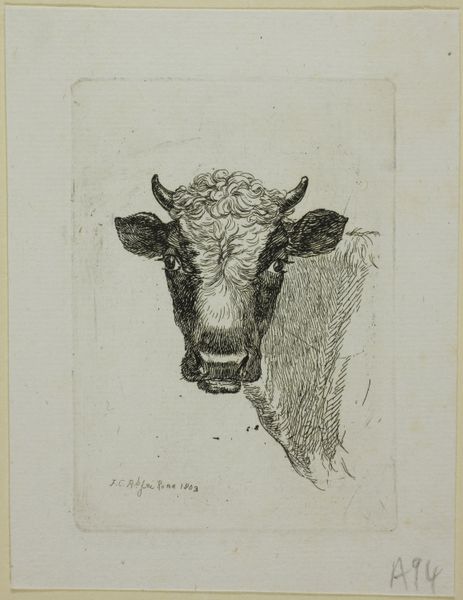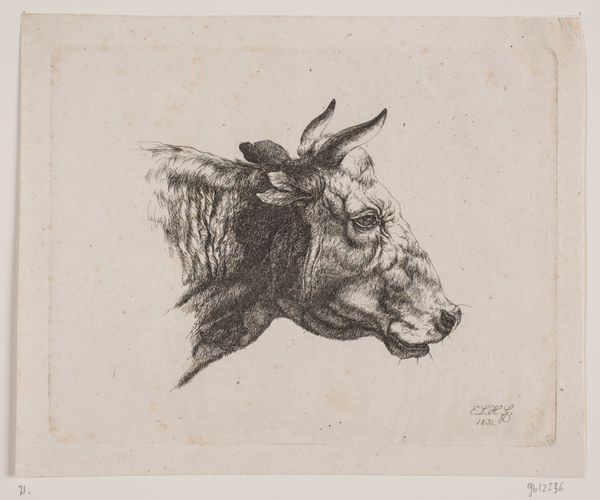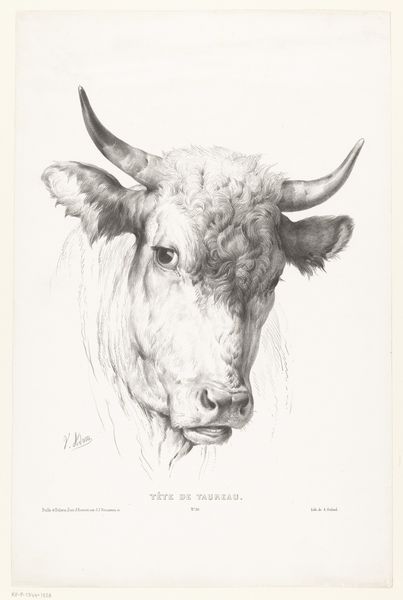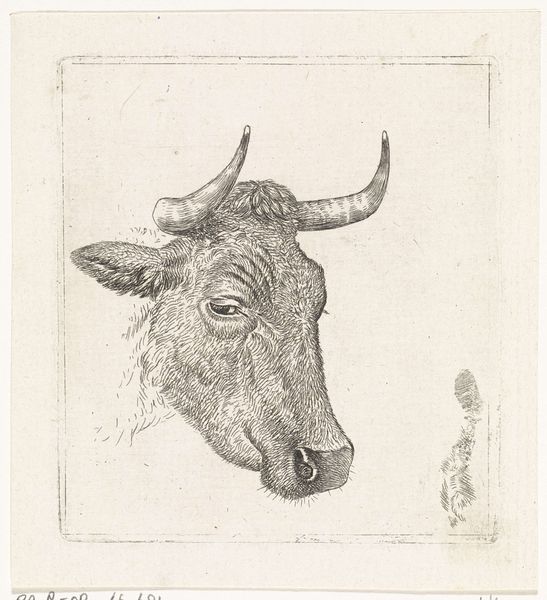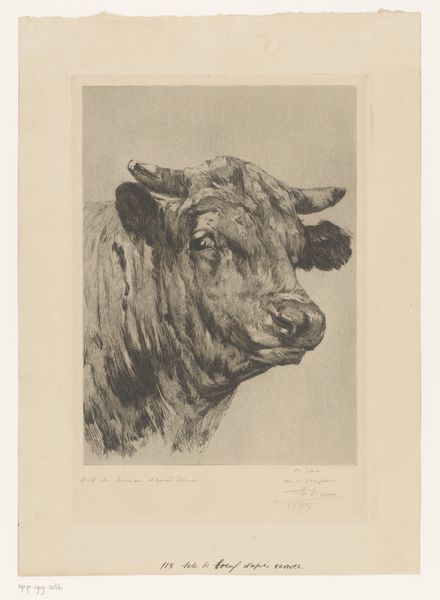
print, engraving
#
portrait
# print
#
old engraving style
#
engraving
#
realism
Dimensions: height 223 mm, width 200 mm
Copyright: Rijks Museum: Open Domain
Pieter Bartholomeusz. Barbiers created this lithograph, "Stierenkop", using a technique that democratized image-making. Lithography involves drawing with a greasy crayon on a stone or metal plate, then applying ink that adheres only to the drawn areas. It allowed for relatively quick reproduction, moving away from the laborious, highly skilled work of engraving. The resulting print retains a directness from the artist's hand, akin to drawing. Consider the social context: agriculture was a key aspect of Dutch economy and identity. Depicting a bull's head wasn't just about accurate representation; it spoke to the relationship between humans and animals, and the realities of labor. Think of the work involved in raising livestock, the economic value placed on these animals, and how lithography, as a medium, played its own role in shaping these cultural values by bringing images like this to a wider audience. By focusing on the materials and the processes of making, we can understand how this print reflects the changing social and economic landscape of its time.
Comments
No comments
Be the first to comment and join the conversation on the ultimate creative platform.
